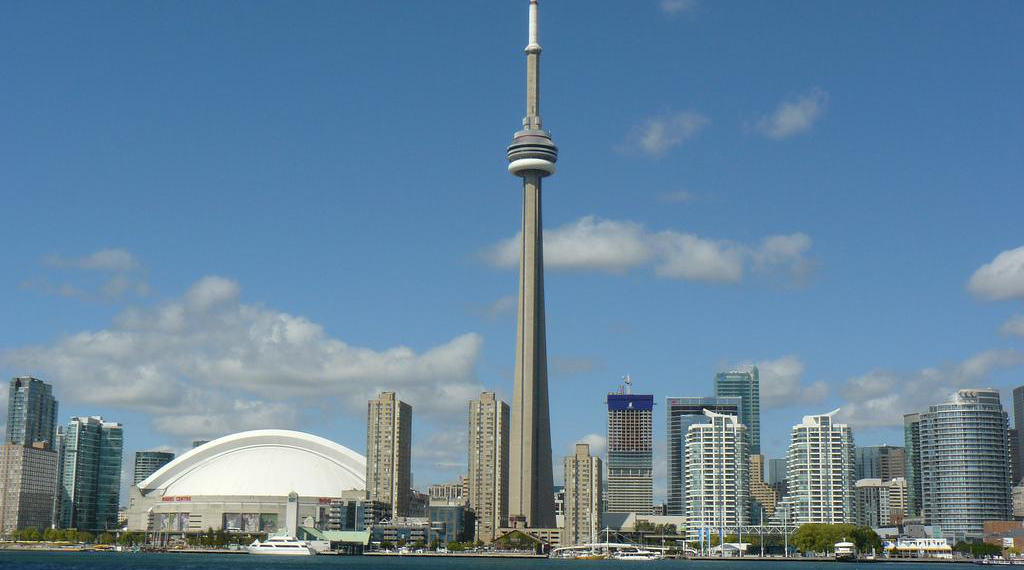
From ‘once in a generation’ projects set to revolutionize trade with the USA forever, historic towers and tourist attractions, to ingenious solutions for perplexing problems, we take a look at a few of Canada’s most interesting engineering projects!
Heavy loads on soft soil – Canfor’s Fort St. John mill logging yard
When you need to feed a saw mill with logs that weigh between 600 and 1000 kilograms each, soft, saturated peat soil combined with a high-water table are not exactly what you’d call ideal yard conditions! In order to enable the heavy log hauling trucks and other mechanical equipment necessary for their daily operations, Canfor had to haul in and apply new and expensive gravel each year, only to watch it rapidly fail. The need for constant and expensive maintenance meant the sawmill could never operate at full capacity.

Before
They needed a more permanent solution – and that solution turned out to be a soil stabilization technology called Neoloy geocells. Supplied by PRS Geo Technologies in Canada, Neoloy® Geocells are a three-dimensional mechanical soil stabilization solution for improving the load bearing capacity of a soil and distributing heavy loads over a wider area.

Neoloy geocells
When filled with granular material, a semi-rigid ‘mattress’ is created. This essentially separates the problematic soil from the log yard pavement structure. The result is low degradation and better performance of the log yard, which completely eliminated downtime caused by the soil conditions. Overall, the use of these geocells helped Canfor avoid a $750,000 production loss/year, allowed the addition of another shift for 24-hour operations, and greatly improved staff morale and safety.

After
The Gordie Howe International Bridge – connecting Detroit, USA and Windsor, Canada
In early October 2018, construction officially began on what will become the longest cable-stayed bridge in North America and the seventh longest in the world, with an 853-meter clear span. At an estimated cost of around $5.7 billion, the bridge will allow highway-to-highway access between the two countries and is expected to be opened to traffic at the end of 2024 after 74 months of construction.

Detroit River between Detroit and Windsor, Canada
The major challenge to be overcome on this project was how to complete construction while minimizing disruption to the busy river traffic on the Detroit River below. To achieve this, engineers decided on the ‘balanced cantilever’ construction method – meaning no permanent or temporary elements would need to be located in the river. It involves construction teams from each side quite literally meeting in the middle – as each half of the bridge will be completed independently. Two 220-meter towers on either side will be built first, before each team begins constructing their 425 meter ‘half’ outwards across the river. The bridge is set to become the premier passage for trade between the two countries, create thousands of jobs, and act as a major economic stimulus in the region for decades to come.
The CN Tower, Toronto

At 553 meters or 1, 815 feet tall, the iconic CN Tower of Toronto held the title for the world’s tallest freestanding structure from 1976 all the way to 2007, and is still a must-visit attraction for anyone visiting the city for the first time. The defining feature of the Toronto skyline, the tower draws in thousands of visitors who come to marvel at the famous glass floor, SkyPod and panoramic window walls, enjoy some fine dining at the award-winning 360 Restaurant, or dare to take part in an ‘EdgeWalk’ – the world’s highest ‘hands-free’ external walk 116 stories above the ground! On a clear day, it’s even possible to see Niagara Falls in the distance, with a visibility of around 100 miles from the SkyPod.
The construction of the main support pillar was achieved through use of a hydraulic metal platform that raised itself about 6 meters each day as the concrete below it set, an unprecedented engineering feat at the time. A Sikorsky S-64 Skycrane helicopter affectionately known as ‘Olga’ was used to fly the 335-foot steel communications antenna up to the top in 36 sections. That antenna now transmits 30 Toronto television and radio signals, as well as microwave and wireless signals.
Due to its height, it had to be designed to deal with frequent lightning strikes – typically around 82 times per year, although it was hit a record 52 times in 84 minutes in 2011! Long copper strips channel the lightning charge so effectively that apart from the sky turning white for an instant, strikes are imperceptible to those inside. In 1995, the CN Tower was declared one of the modern Seven Wonders of the World by the American Society of Civil Engineers.





